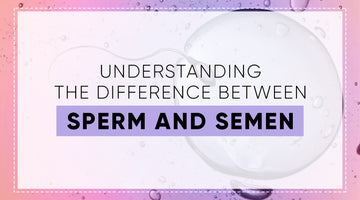
The male body, like the female body, is riddled with mysteries. The most common and mysterious questions, however, are those about sperm. We all know it contains sperm, but what else does it contain? Why does it sometimes look and smell different? Is it good for the skin and can it prevent miscarriages? Continue reading to find out the answers to these and other surprising questions about sperm.
Semen and sperm are not the same things. Sperm is a microscopic cell that is a part of the semen. The job of the sperm is to fertilize the egg inside a woman’s body. The two tubes in the pelvis and the seminal vesicles provide fructose, a type of sugar that gives spermatozoa the energy it needs to swim to the female egg. The prostate fluid contains chemicals that make the semen more liquid so the sperm can glide more freely. All these components make up semen.
The male reproductive system of animals produces two components: sperm and semen. Sperms are male reproductive cells. They are contained within the semen. The primary distinction between sperm and semen is that sperm is the only cellular component of the semen, whereas semen is the sperm's liquid carrier. Sperms are tiny cells with haploid nuclei. They transport male genetic information to the female egg cell. Semen is also known as seminal fluid, and it contains millions of sperms. Semen is a viscous liquid that nourishes and maintains the motility of sperm.
What Exactly Is SPERM?
A male reproductive cell is referred to as sperm. Sperms are small, compact cells with a highly specialized function: the fertilization of the female egg cell. Males produce sperm cells continuously throughout their lives, beginning with puberty. Sperms are produced in the gonads during a process known as spermatogenesis. Primary spermatocytes are diploid, producing four mature sperm cells or spermatozoa.
What Exactly Is SEMEN?
Semen is the reproductive fluid of males that contains suspended sperms. It is also known as seminal fluid. Though sperms are the most important cellular component of sperm, the sperm also contains some other important substances. Semen provides nourishment for sperms as well as a swimming medium.
Semen Components
Sperm cells, fructose, prostaglandins, amino acids, enzymes, flavins, citric acid, proteins, phosphorylcholine, vitamin C, zinc, acid phosphatase, prostate-specific antigen, sialic acid, and mucus are the primary constituents of sperm.
Some Interesting Facts About Sperm & Semen
- Pre-ejaculation fluid, also known as precum, contains very little viable sperm.
- Men can produce sperm throughout their lives, but it isn't always conceivable.
- Although sperm allergy is a rare condition, it does exist.
- Sperm contains very small amounts of vitamin B12, vitamin C, calcium, lactic acid, fructose, zinc, magnesium, potassium, fat, sodium, and many different proteins.
- The average amount of semen released during ejaculation is between 2 and 5 ml, which is equivalent to one teaspoon, but an average ejaculation contains between 15 million and 200 million sperms.
Test for Semen Analysis
In general, infertile couples are prescribed a semen analysis test, which is essentially an analysis of the sperm and its constituents. It is not uncommon for a man to have an ejaculation and produce sperm; however, this sperm sample may be devoid of sperm cells, giving rise to the condition of azoospermia, also known as "no sperm count," which is characterized by a total absence of sperm in ejaculation. It affects 5% of infertile men.
The absence of sperm in the sperm fluid could be caused by a number of factors, including a problem with the sperm production process or a blockage that prevents normal sperm production from reaching the ejaculate. In this case, doctors recommend fructose testing of sperm. It should be noted that the seminal vesicle in the male reproductive organ produces fructose. It is released from the sperm during the ejaculation process. The presence of fructose in the sperm sample indicates that the man is producing sperm.
AADAR always talks about facts and concepts to make their valuable customer clear with the mindset of their problems and always have feasible solutions. We deal with all-natural Ayurvedic ingredients in our medications to treat anyone naturally and effectively. AADAR has Health Experts with whom you can easily connect and discuss your sexual concerns. To obtain the most accurate diagnosis, you can consult your family doctor first, or you can contact our Health Expert or connect with us at +919867667699




